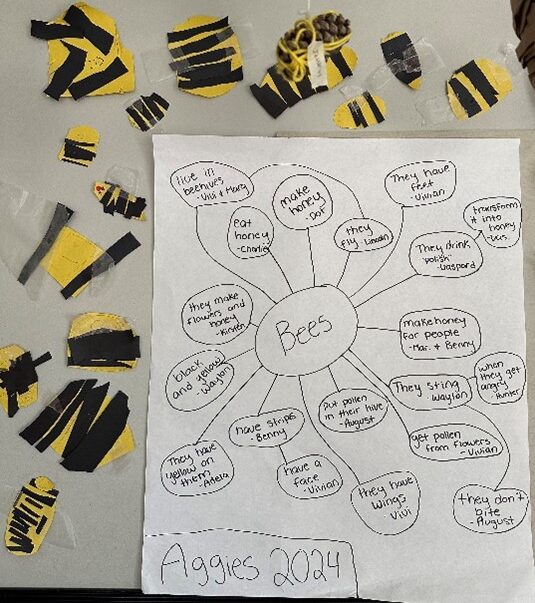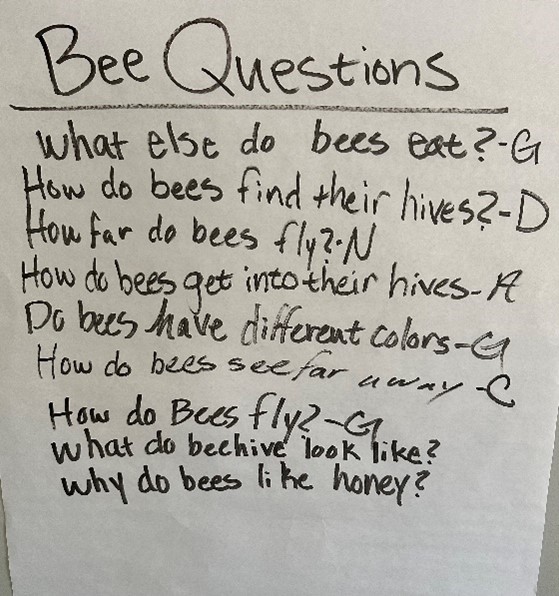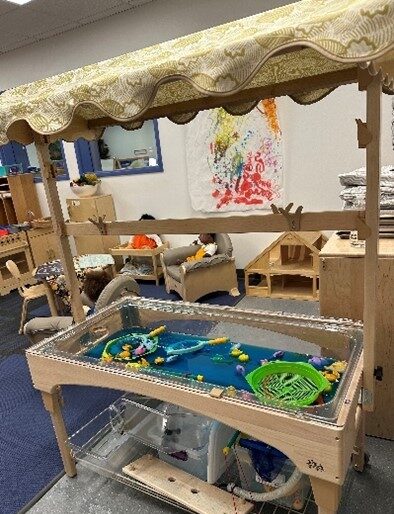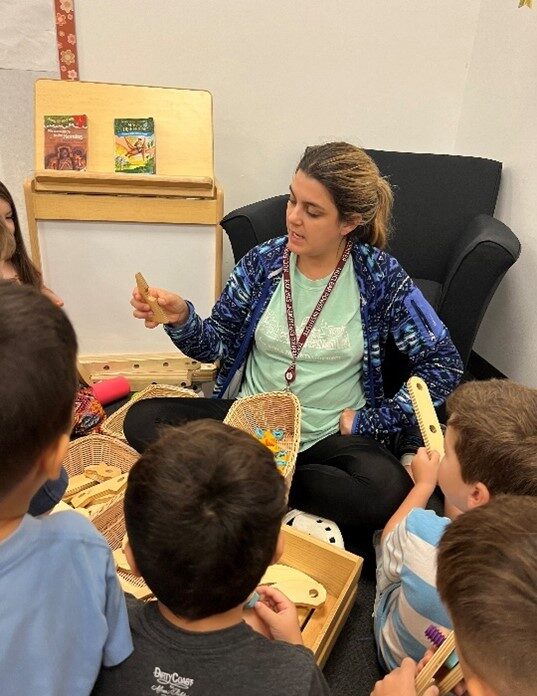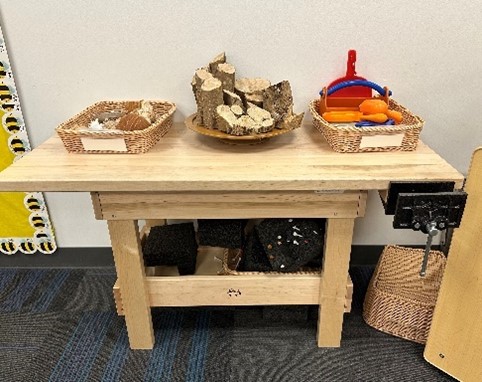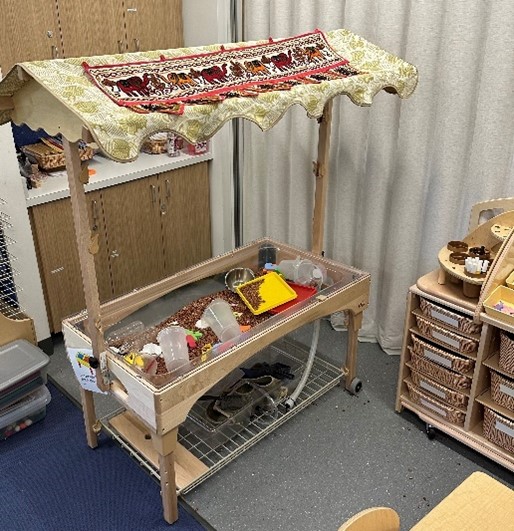HOWDY FAMILIES AND FRIENDS!
The Children’s Centers are busy building a collaborative community shaping lifelong innovative learners….
STEAM (science, technology, engineering, art, and mathematics) plays a vital role in early childhood education. It serves as the foundation for our curriculum, emphasizing inquire-based instruction. Key elements of our approach include active learning, hands-on experiences, exploration, and inquiry, all of which are crucial for fostering an engaging curriculum for our youngest Aggies.
When young children participate in active learning, such as STEAM, they build their understanding of vocabulary, critical thinking, problem-solving, communication, reflection and more. Our teachers facilitate this process by asking high-quality open-ended questions. Integrating STEAM allows educators to concentrate on both content (what to learn) and processes (how to learn).
Below are examples of how the Children’s Centers are integrating STEAM into every day.
STEAM child-centered projects:
Project, inquiry-based learning refers to a set of teaching strategies that enable teachers to guide students through in-depth studies of real-world topics. Projects have a complex but flexible framework within which teaching and learning are seen as interactive processes. When teachers implement the approach successfully, students feel highly motivated and actively involved in their own learning, leading them to produce high-quality work and to grow as individuals and collaborators. The Aggies classroom at the Becky Gates Children’s Center recently began the Bee project. Below are images of their webbing and inquiries.
STEAM integrated throughout the day solving common problems:
Problem solving occurs daily in all classrooms. Teachers use a problem-solving approach to support children in solving conflicts. A specific time during the preschooler day includes message board where educators discuss and find solutions for problems that have arisen in the classroom such as taking turns on the bikes or swings outside. Children use reasoning skills to come up with solutions and reflect on those solutions to make the decision on the best strategy to use. This extends even further as educators revisit the solution with children having them draw or chart on their solution to check-in with their opinions on the problem solution.
STEAM emerging from play:
Teachers at the Children’s Centers carefully select materials for the children based off of their observations and assessment data to inspire playful learning in science, technology, engineering, art, and mathematics. The Purple Sage classroom at the Charlotte Sharp Children’s Center recently introduced a large-scale, loose parts building and engineering kit empowering children to follow their curiosity through hands-on, open-ended, creative, and collaborate play. This stemmed from the chapter books children were reading during Story Time. Other preschool classrooms at the Charlotte Sharp Children’s Center have sensory tables with sand and water as well as a woodworking area for children to explore STEAM concepts.
STEAM labs or studio spaces:
Each of our Children’s Centers have STEAM labs based off the Reggio Emilia atelier which are productive places for children to explore projects connected with experiences planned in classrooms to extend learning.
The Charlotte Sharp Children’s Center’s STEAM lab is opening this month thanks to a generous donation. The lab will include a maker station, light lab station, magnetic wall, and chalk spinner to name a few.

If you would like to make a donation to support STEAM learning at the Children’s Centers please click HERE.

